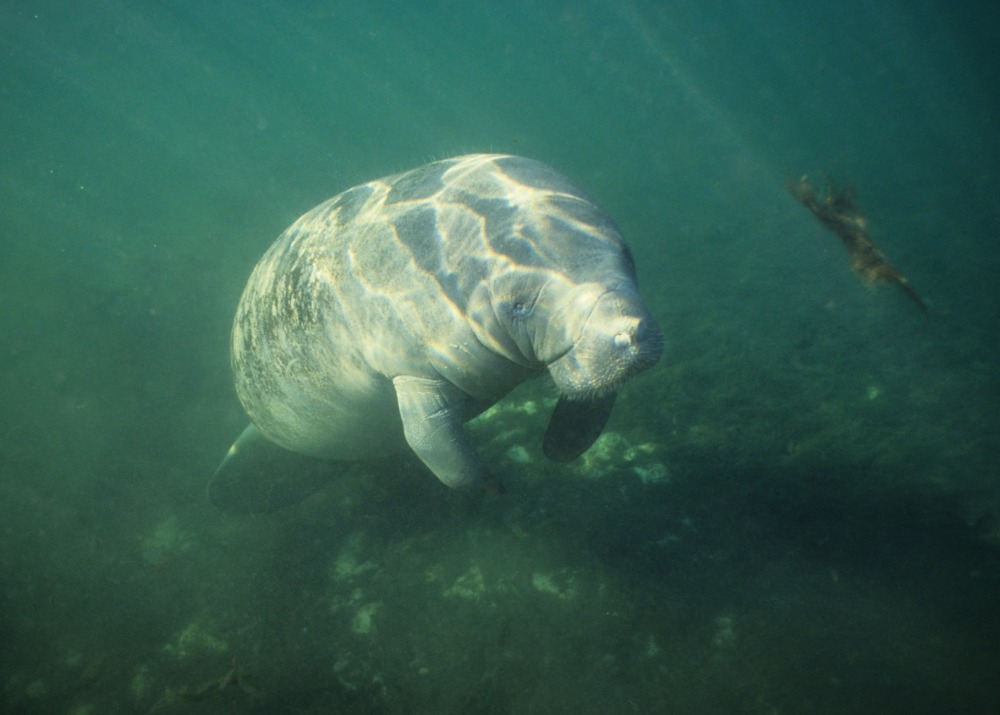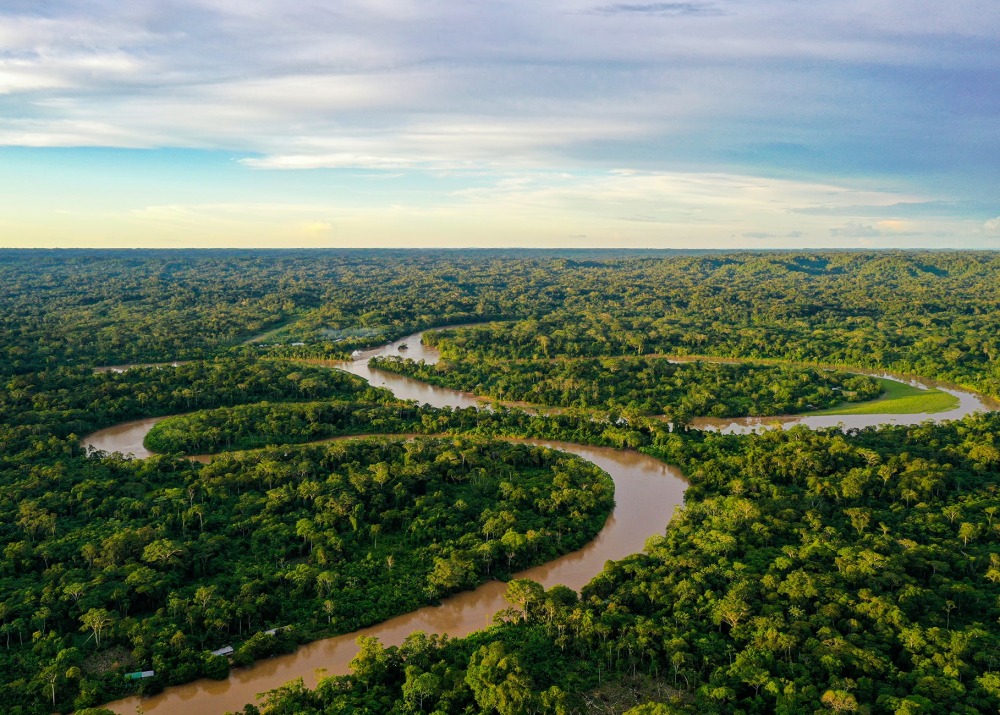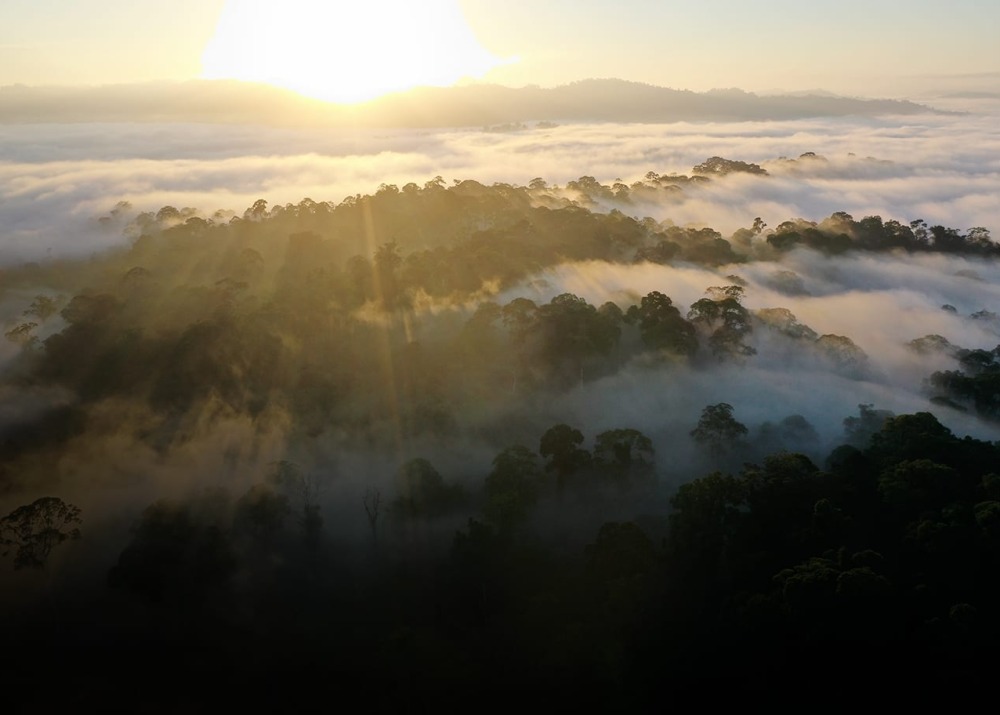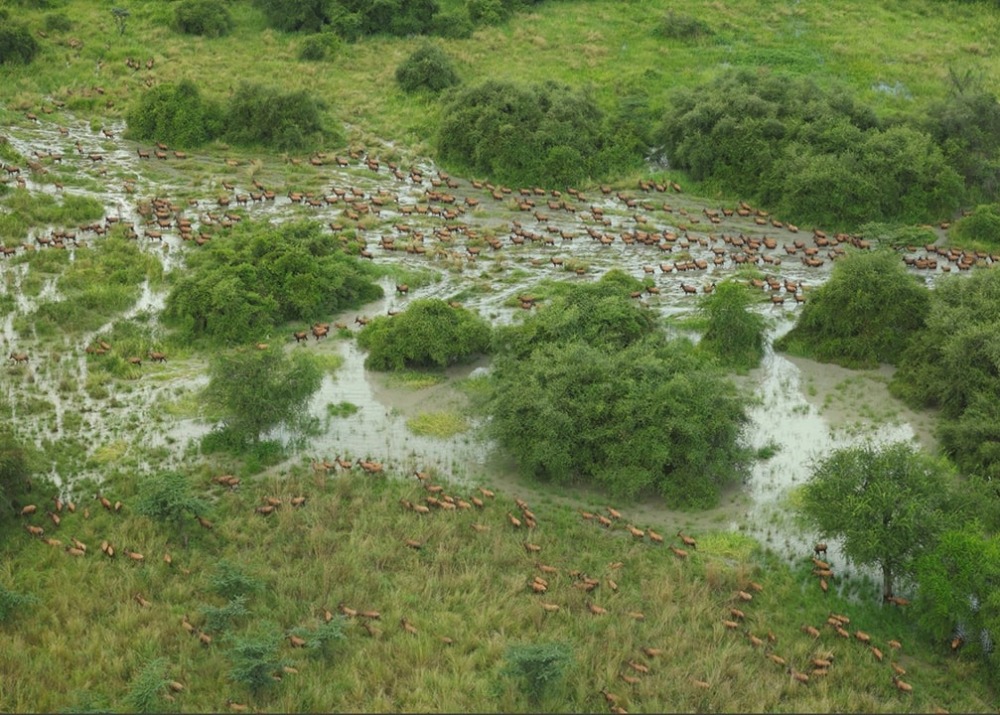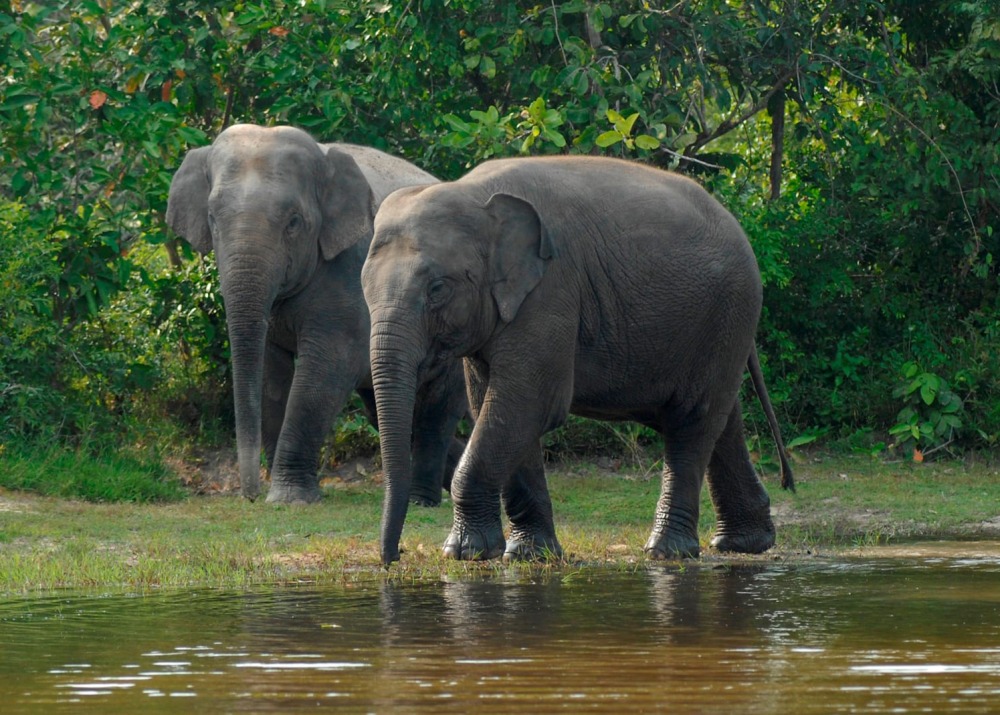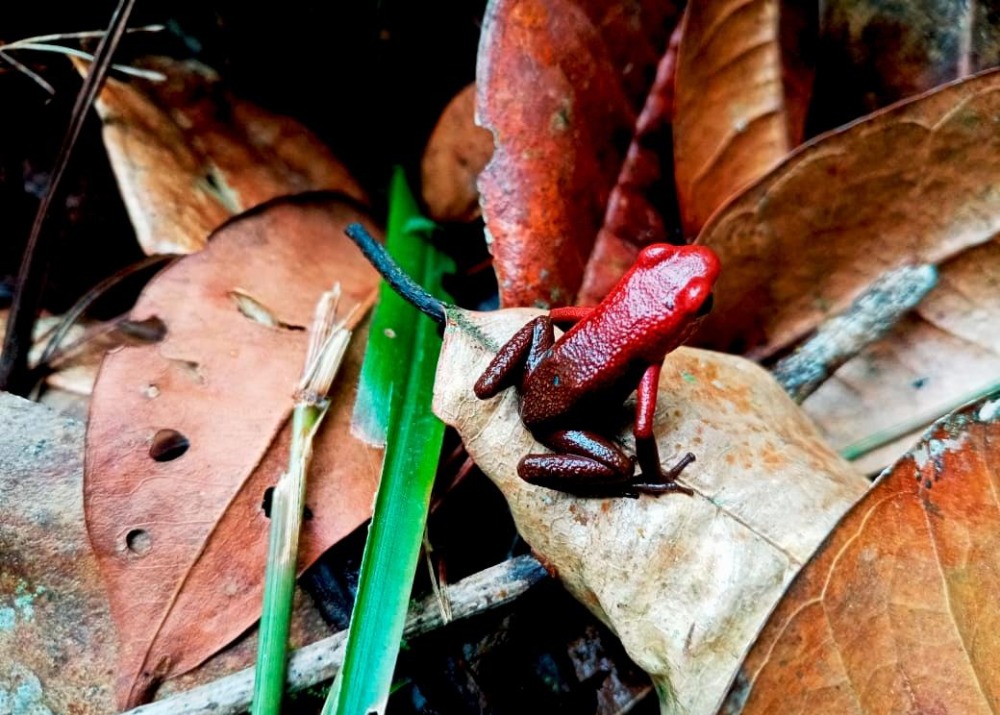Protecting Malaysia’s Catscape for Felines Large and Small
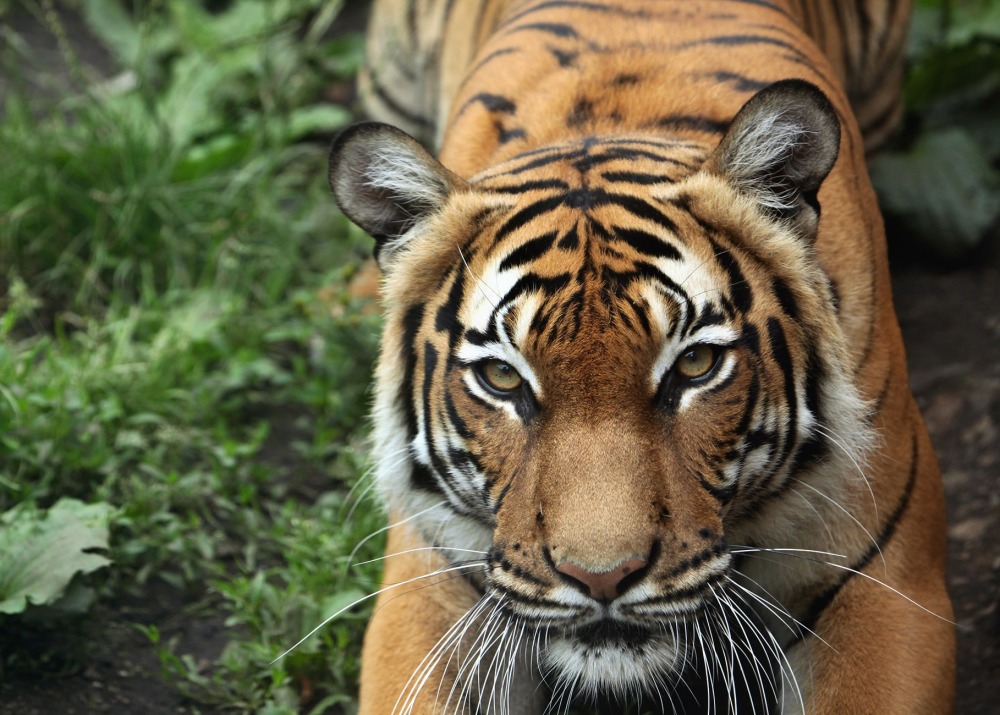
Peninsular Malaysia is the quintessential catscape—most notably for the Malayan Tiger, a distinct population of Tiger in Peninsular Malaysia that is considered critically endangered in its landscape.
Embraced by the South China Sea on the east and the Strait of Malacca to the west, this humid region hosts extraordinary biodiversity within a tapestry of old-growth, intact rainforests, grasslands, mangroves and mountainous regions. Dense cover, an abundance of prey and water sources, including Lake Kenyir in east-central Malaysia, create a rich environment for the Malayan Tiger and other felines.
Four natural forest complexes stretching from the north to the south punctuate this peninsula and together are known as the Central Forest Spine—the oldest forest on Earth and largest remaining forest block in Malaysia. This vast forest is also known as Peninsular Malaysia’s “Green Lung,” due to its ability to safely store massive amounts of carbon.
Not only a refuge for the Malayan Tiger, this rainforest overlaps the range of six other species of wild cats—large and small—including the Vulnerable Clouded Leopard, Mainland Leopard Cat, Flat-headed Cat, Marbled Cat, Asiatic Golden Cat and Critically Endangered Indochinese Leopard, making it one of the most cat-rich areas on the planet.
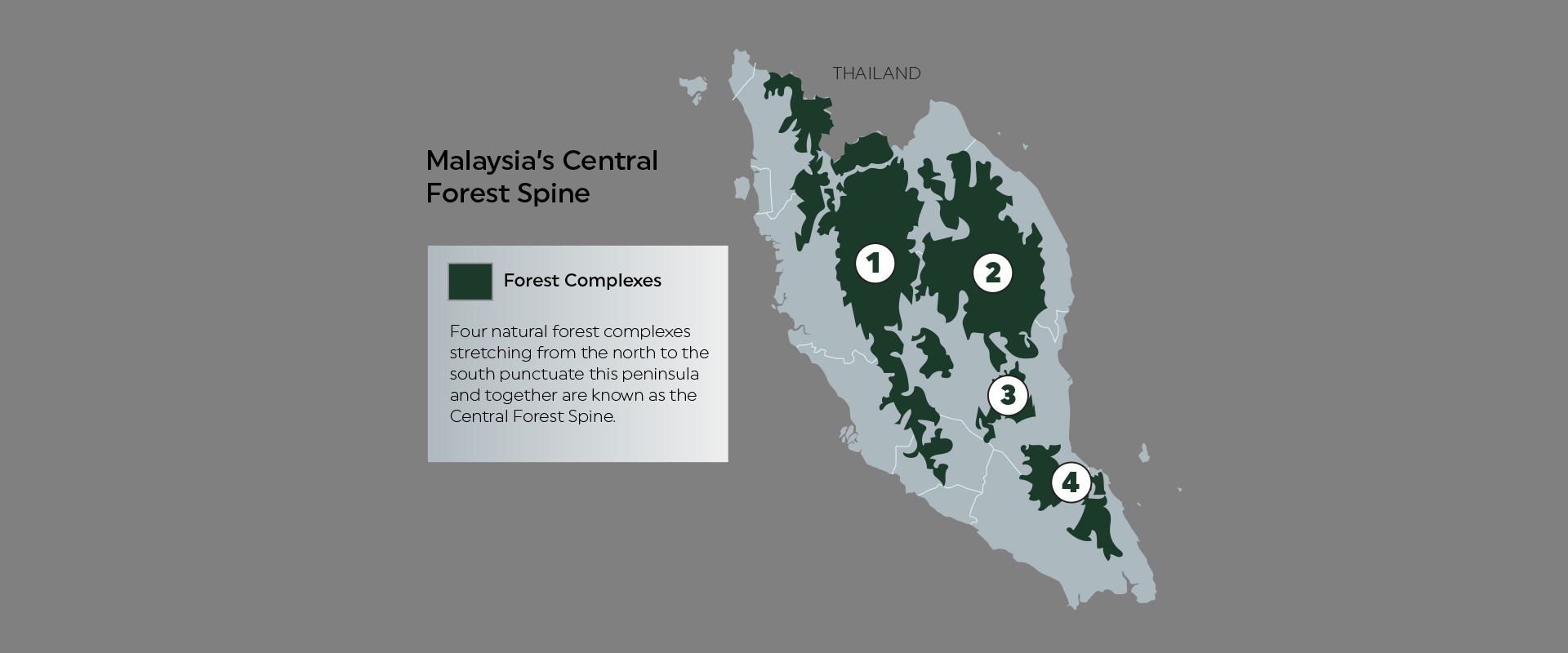
Threats
But Malaysia is on the brink of losing its magnificent tigers as logging and other exploitation fragment their rainforest home. Although deforestation rates have recently improved, because of continuing deforestation, urbanization, and illegal hunting for their body parts and the illicit wildlife trade, Malayan Tigers are retreating into isolated patches of forest. As their territory in Malaysia continues to be decimated, evidence suggests the tiger population continues its downward trend with fewer than 150 Malayan Tigers estimated to remain in the wild.
It is urgent that the remaining isolated forest islands are connected and safeguarded to save the Malayan Tiger, Malaysia’s national animal. A connected Central Forest Spine will allow tigers to range freely across protected areas of the landscape and hunt prey essential for their survival.
This globally important Tiger Conservation Landscape includes the vitally significant Taman Negara National Park—Malaysia’s first and largest park. It encompasses Peninsular Malaysia’s highest mountain, Mount Tahan. This sanctuary is home to essential prey for the Malayan Tiger. In addition to tigers, over 150 mammal species live in the more than 1-million-acre contiguous Taman Negara National Park including the Endangered Asian Elephant, Critically Endangered Helmeted Hornbill and Endangered Malay Tapir.
Adjacent to Taman Negara National Park, Kenyir State Park, a 2017 Rainforest Trust-supported project, safeguards 74,130 acres and is another important refuge for wildlife. This spectacular lowland and foothill rainforest has played an important role in the protection of the Tiger.
To further expand and fortify Malaysia’s tiger stronghold, Rainforest Trust and our partner, Panthera, are working to create the 102,905-acre Tembeling Protected Area.The project will secure this forest area and upgrade the protection status of the adjacent 229,636-acre Gunung Aais Forest Reserve, where no on-the-ground defense against poaching is present. This initiative is a significant step forward in a 20-year strategy to save the entire Central Forest Spine of Peninsular Malaysia for the Malayan Tiger and many other species of fauna and flora it shelters. This project also supports the National Tiger Action Plan for Malaysia (2008-2020).
Once this haven is conserved, tigers can move freely between fragmented ranges and maintain healthy genetic diversity within their population. With your help, we can preserve this irreplaceable “catopia” for the Malayan Tiger so it may stave off certain extinction, and thrive.
Keystone Species Play an Indispensable Role
Did you know the Critically Endangered Malayan Tiger is an example of a “keystone species” predator that is pivotal to maintaining the integrity of Peninsular Malaysia’s fragile biome?
Keystone species can be any living organism, from plants and animals to fungi and bacteria, that hold a habitat together. There are three types of keystone species: predators, ecosystem engineers and mutualists. Predators maintain a healthy balance in ecosystems by regulating prey populations. Ecosystem engineers, like the beaver, alter habitat to create a healthy environment for other wildlife. Mutualists, like flowers and bees, act together in a symbiotic relationship for their mutual benefit.
Malayan Tigers play a vital role as a keystone species because of their major effect on prey. While these carnivores can kill prey much larger than themselves, including Water Buffalo, Gaur and rarely, Asian Elephants and rhinos, they prefer mammals the same weight as themselves, like the Sambar deer, Muntjac (barking deer) and Wild Boar. Accessibility to this robust prey base is essential for tigers to survive and reproduce. In Malaysia, male tigers require close to 19,000 acres to roam and kill between 50 to 60 of these ungulates—large mammals with hooves—per year.
Sadly, the benefits that keystone species provide are not always realized until they vanish. That is why Rainforest Trust is committed to preserving expansive habitat in Malaysia for these remarkable tigers before it is too late.
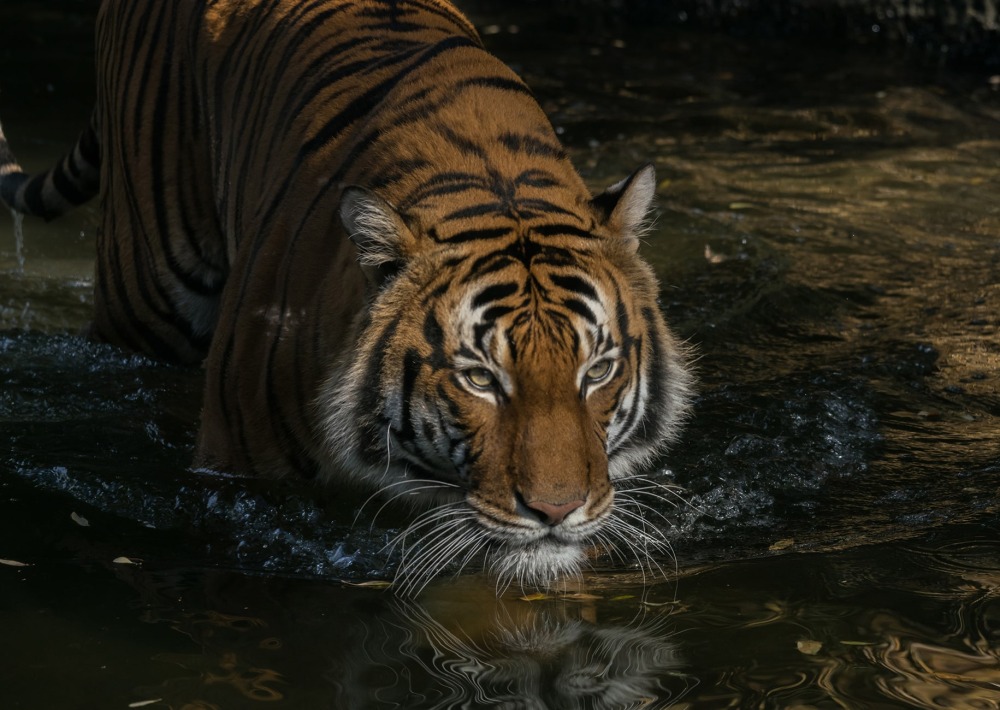
Malayan Tiger, by Matthew T Griffith
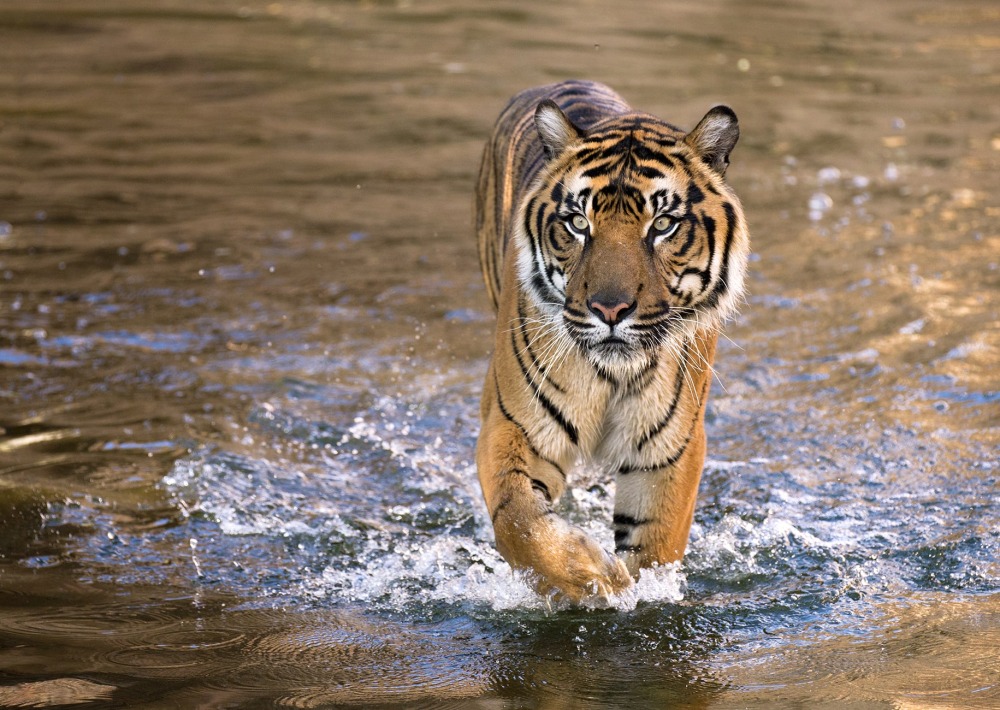
Malayan Tiger, by Felineus
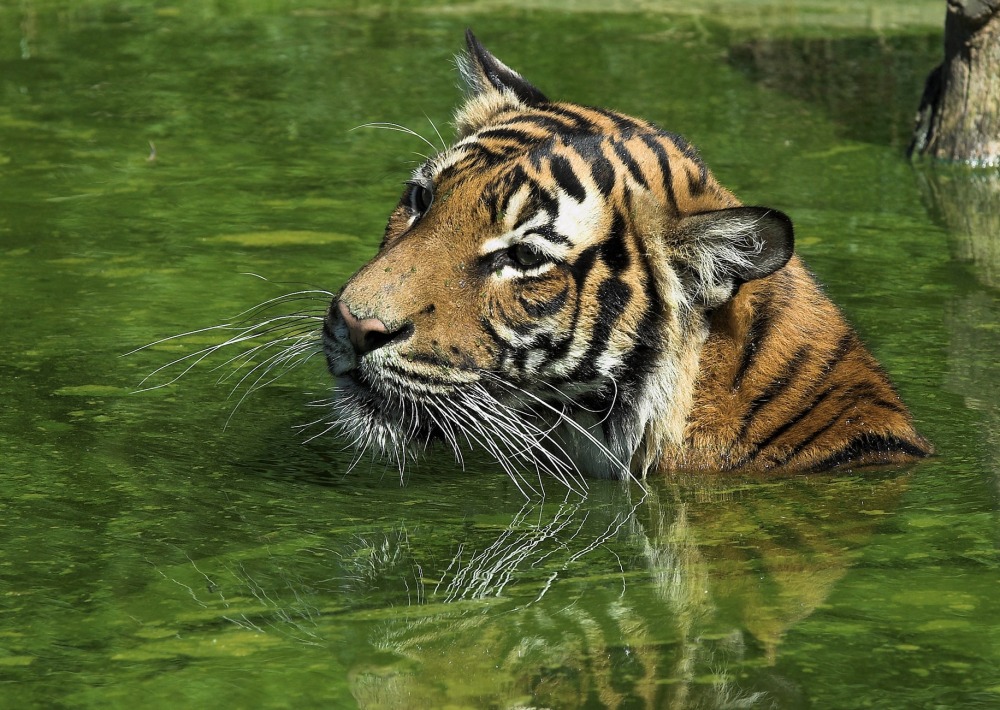
A swimming Malayan Tiger (EN), by Hans Stieglitz

Sign up to receive the latest updates
"*" indicates required fields


